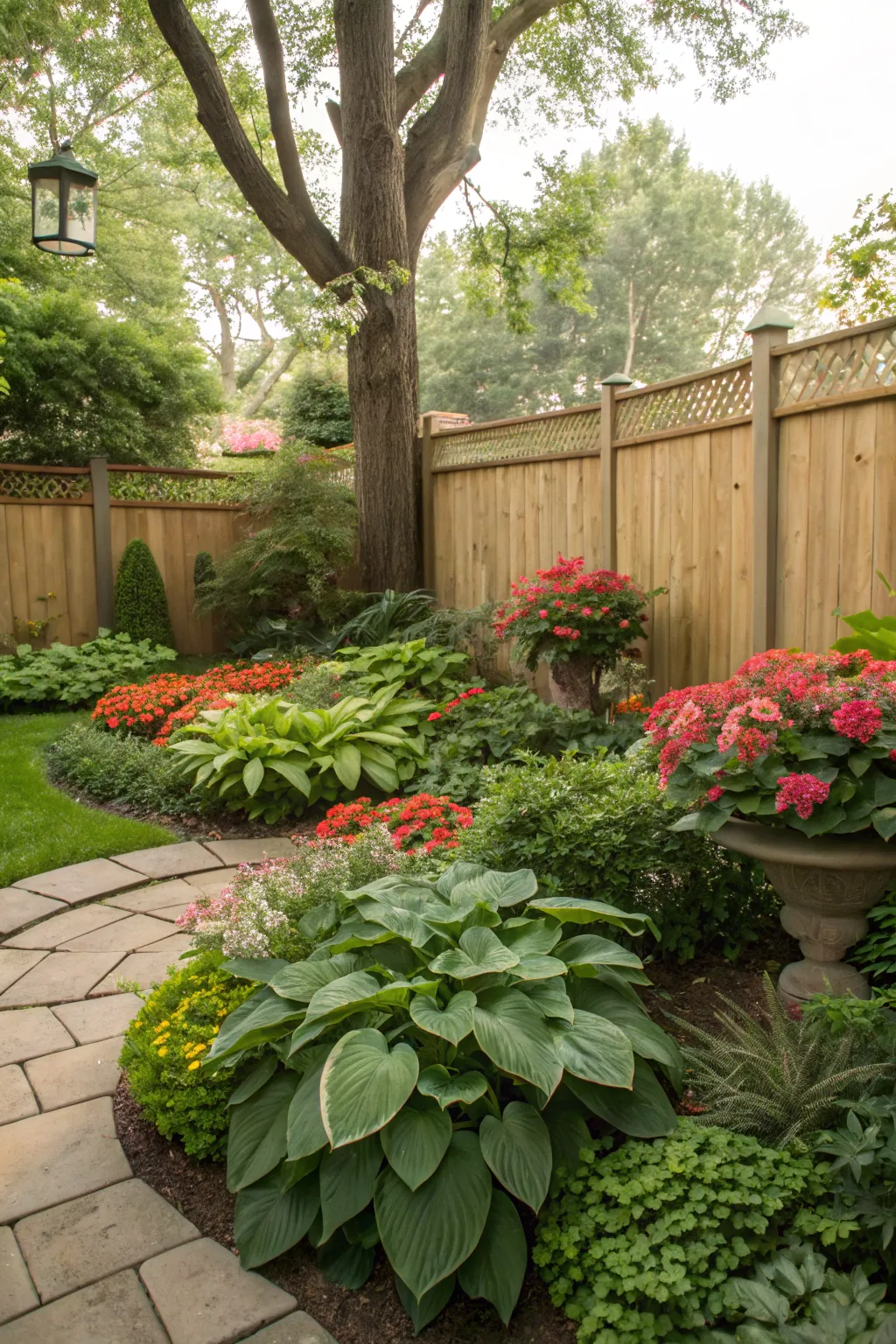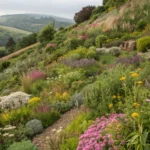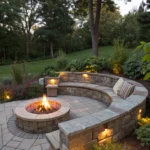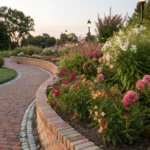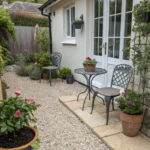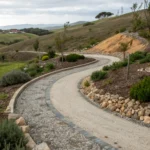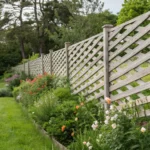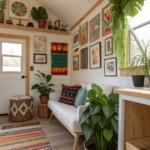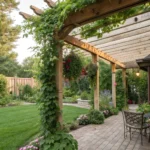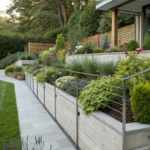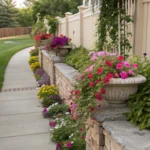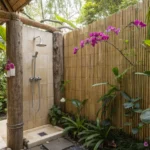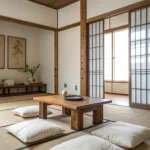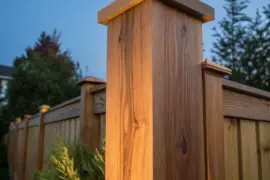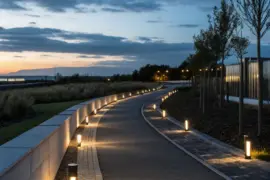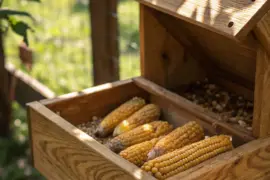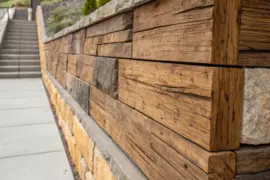There’s something almost magical about stepping into a shade garden. The air feels cooler, quieter—like nature’s own secret lounge, softly shielded from the day’s harshest rays.
What if that forgotten, shady nook outside your window could become the coziest hideaway you own?
All it takes is a little vision, some thoughtful planting, and a dash of creativity to transform overlooked corners into lush sanctuaries. Let’s dive into some delightfully modern ways to serve up big style—even where the sun is shy.
1. Edge It Softly!
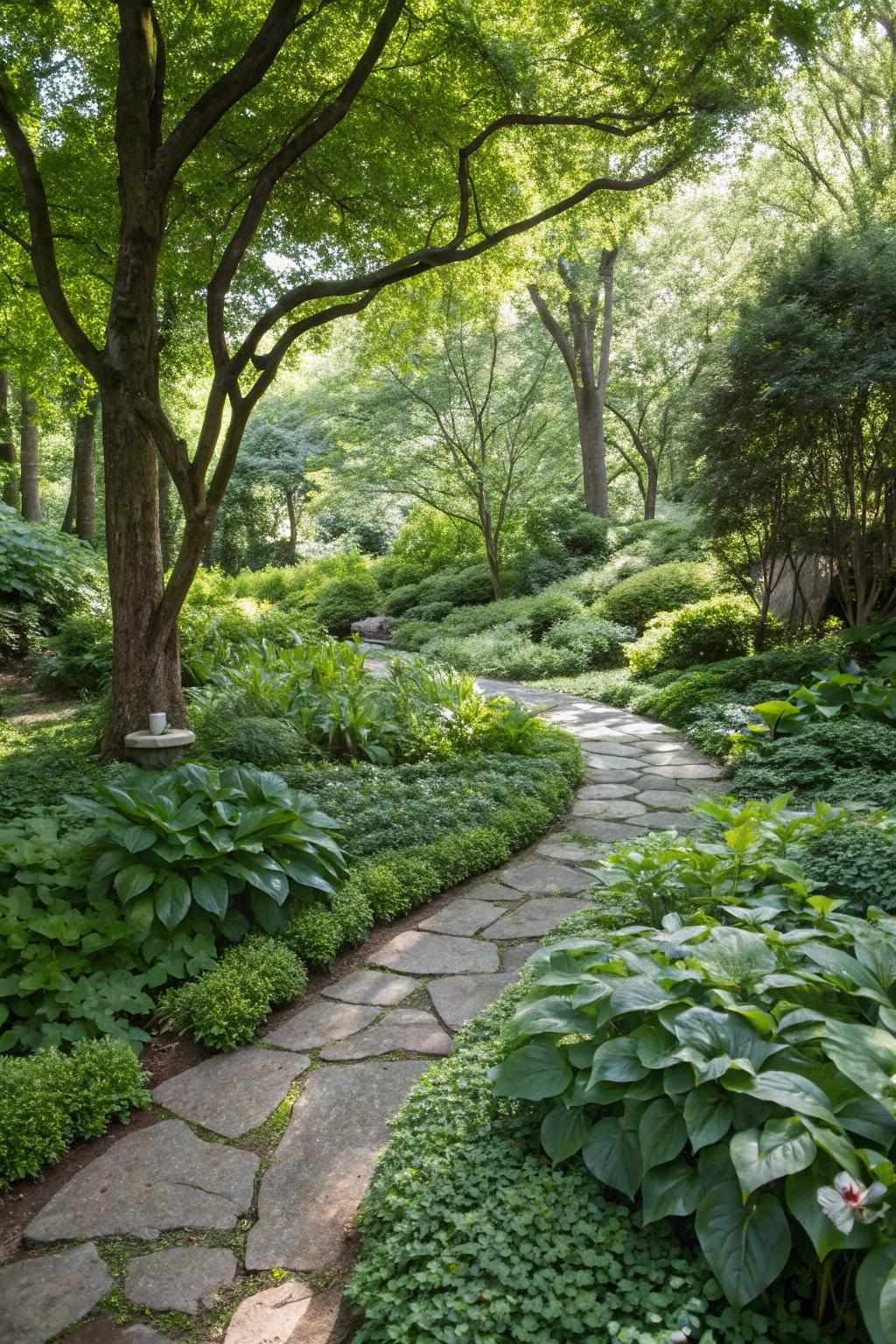
It’s no secret: the edges of a garden set the tone for the whole space. Adding a lush band of groundcover works like a gentle border, blending your plantings seamlessly into the lawn or paths. From my work with shade gardens, I’ve learned that Lamium or sweet woodruff can make the difference between a tidy, tended look and one that’s just a little bit wild.
Ready to try it? Here are two key tips to bring your garden’s edge to life:
- Choose a groundcover that spreads, but won’t overrun your garden—think about maintenance, and don’t bite off more than you can weed.
- Pair textures for contrast—a mat of tiny leaves next to a bold, broad hosta looks intentional and polished.
It’s the little touches that make a garden feel truly loved.
Products that could assist:
2. Could Your Shade Garden Use a Touch of Rustic Charm?
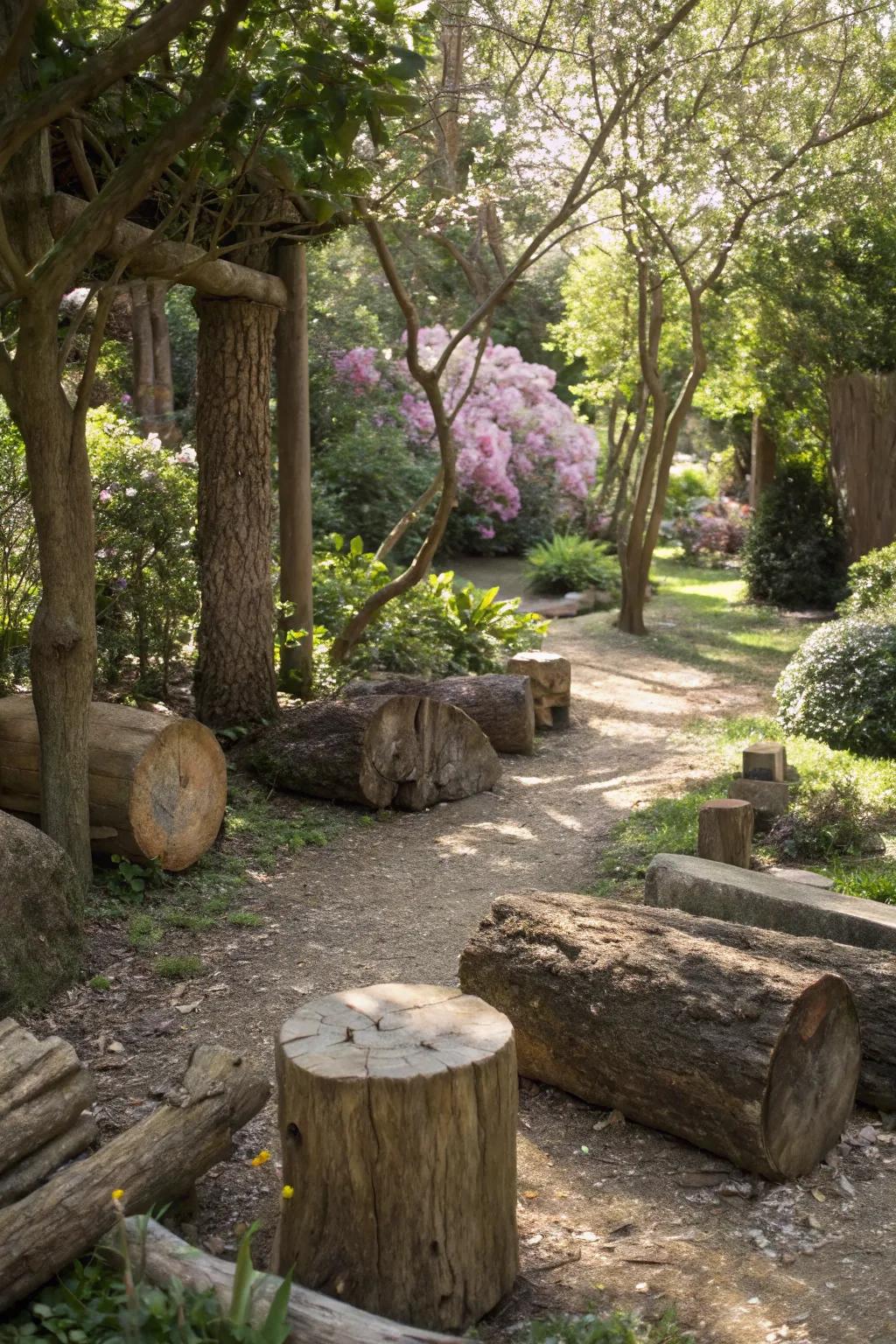
Every garden deserves a little story—and nothing tells one quite like natural wood.
I’m always amazed by the transformation that happens when you introduce wood elements into a shady space. Driftwood pieces, artfully placed logs, or even carved stumps bring out the deep greens and create a feeling of organic harmony. Here are some of my favorite ways to work wood into shaded gardens for both beauty and purpose:
- Use large driftwood branches as sculptural focal points nestled among ferns or hostas.
- Arrange a few wooden logs as impromptu seating—perfect for a quiet reading nook.
- Layer wood slices along a path to create unique stepping stones.
- Repurpose tree stumps as planters for shade-loving blooms or mossy displays.
Once, I collaborated with a pair of clients, Nora and Lucas, who wanted their first garden to feel grounded and inviting. By weaving in chunky logs and whimsical driftwood pieces, we gave their outdoor space an enchanted woodland feel that friends still rave about.
Let the trees you use echo the ones that gave your garden its shade—nature’s full circle.
May just do the trick:
3. Dare to Be Different: Introducing Unusual Shade-Loving Plants for Drama and Delight
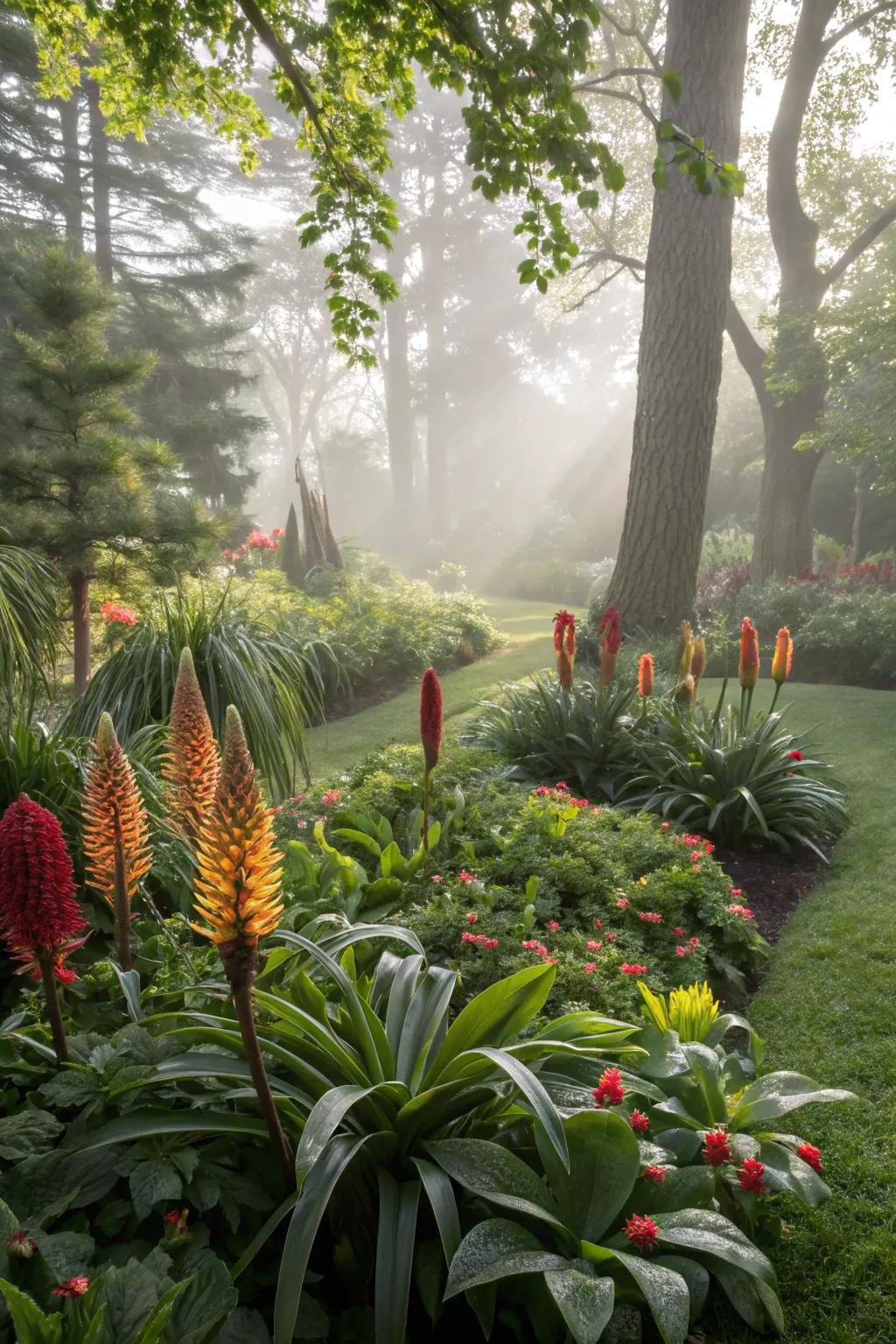
I’ll never forget working with Evelyn, an adventurous plant collector, who dreamed of a garden as unique as her personality. She asked me, “Ashley, can a shade garden really surprise people?” Together, we explored unusual plant choices that turned her quiet, shady border into a show-stopping conversation piece.
When you lean into rare or distinctive varieties, your shade garden becomes more than a peaceful retreat—it becomes a wonderland of discovery. If you’re looking for inspiration, start with plants that offer unexpected color, texture, or form. Consider these standout choices:
- Bamboo water fountain: Perfect for small spaces.
- Ceramic tiered fountain: Adds an elegant touch.
- Solar-powered water feature: Eco-friendly option.
Want even more magic? Pair your new finds with familiar ferns or hostas to highlight their quirks and make every stroll through your garden feel fresh.
Be bold, mix it up, and let your imagination wander—a little risk is what gives a shade garden its spark!
Consider these options:
4. Whimsy and Wonder: Artistic Flourishes for Every Shade
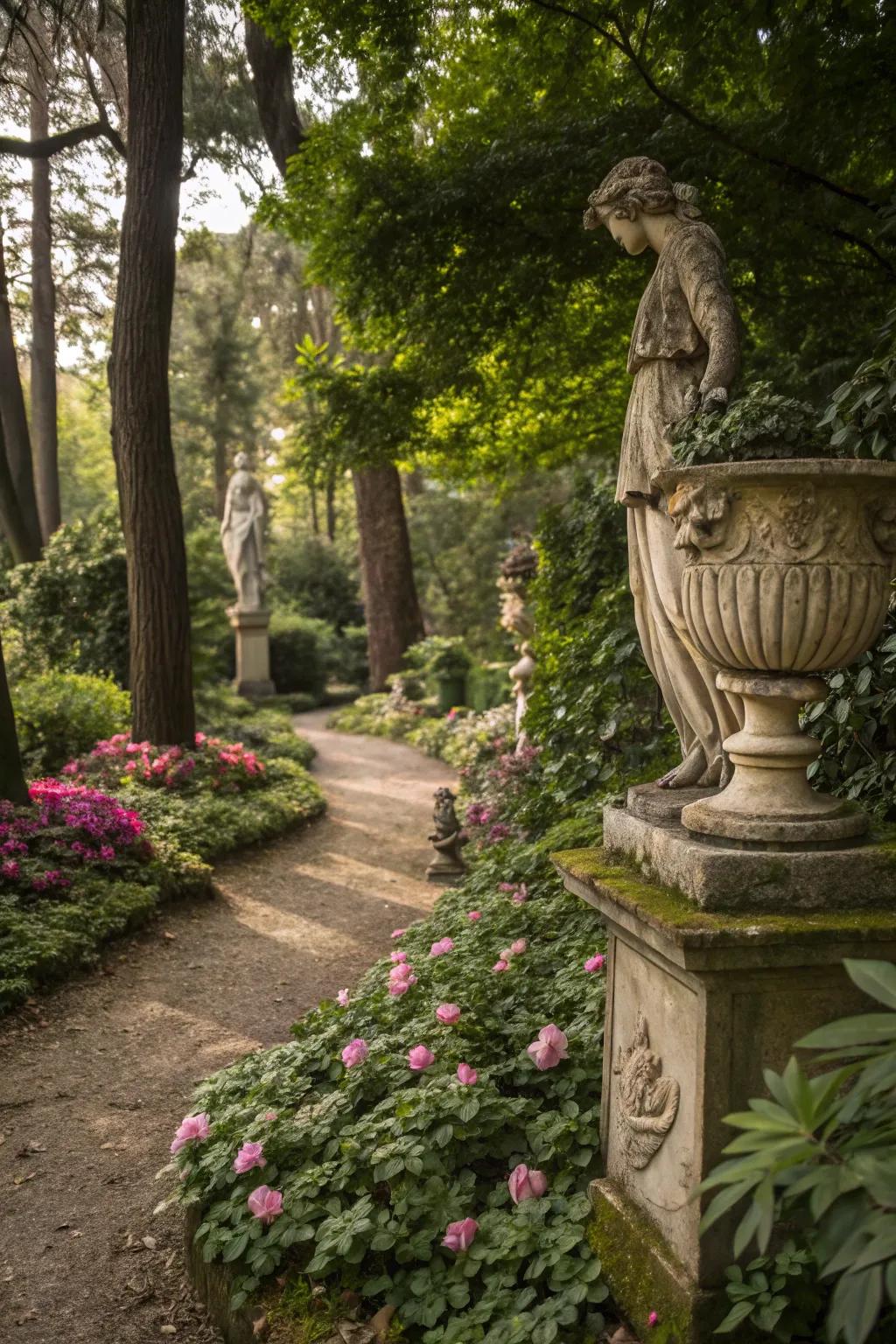
A garden’s personality shines through its finishing touches. Tucking a sculpture behind a fern or hanging a wind spinner from a low branch is the cherry on top—inviting a sense of play and story. Don’t hold back: let your art reflect who you are, and soon your shade garden will feel like a true extension of your living room.
Sometimes it’s those little surprises that make your garden truly unforgettable.
Some ideas to consider:
5. Privacy Matters: Crafting Your Secret Garden Retreat
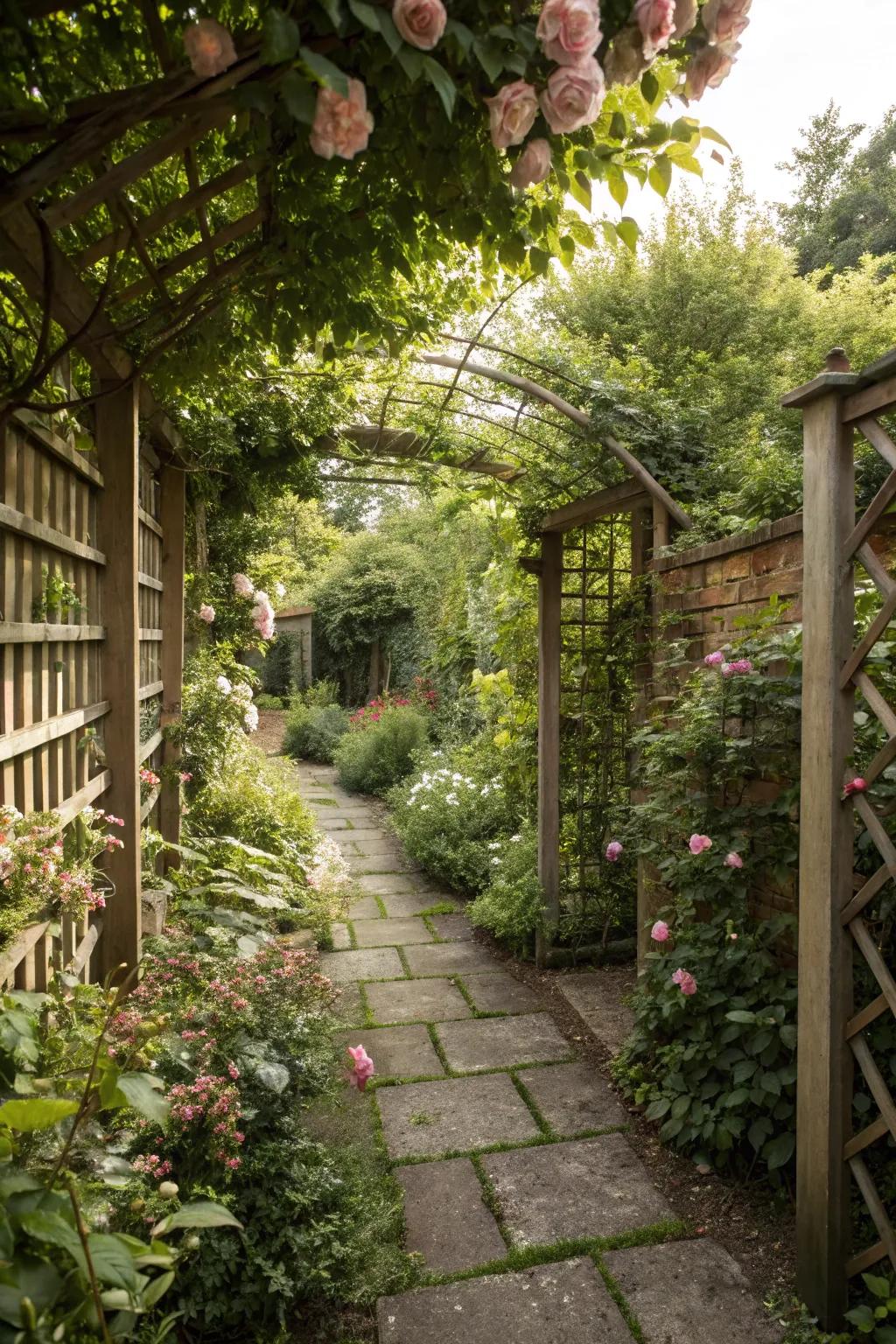
There’s something irresistibly soothing about an outdoor space that feels like a well-kept secret. Privacy in the garden isn’t just about blocking outside views—it’s about creating a space that cradles you, where you can truly unwind.
Whether you use tall fences, lush hedges, or trellises draped with vines, find the combination that makes your green haven feel like a gentle embrace. Take a tip from my client Hannah: her secluded shade nook became her favorite spot for morning coffee after we added a living wall of evergreens and a floral-clad fence panel.
Isn’t a little solitude the truest luxury?
Every garden deserves a quiet corner, and every gardener deserves a place to exhale.
A few choices to try:
6. Shadows Transformed: The Magic of Reflections
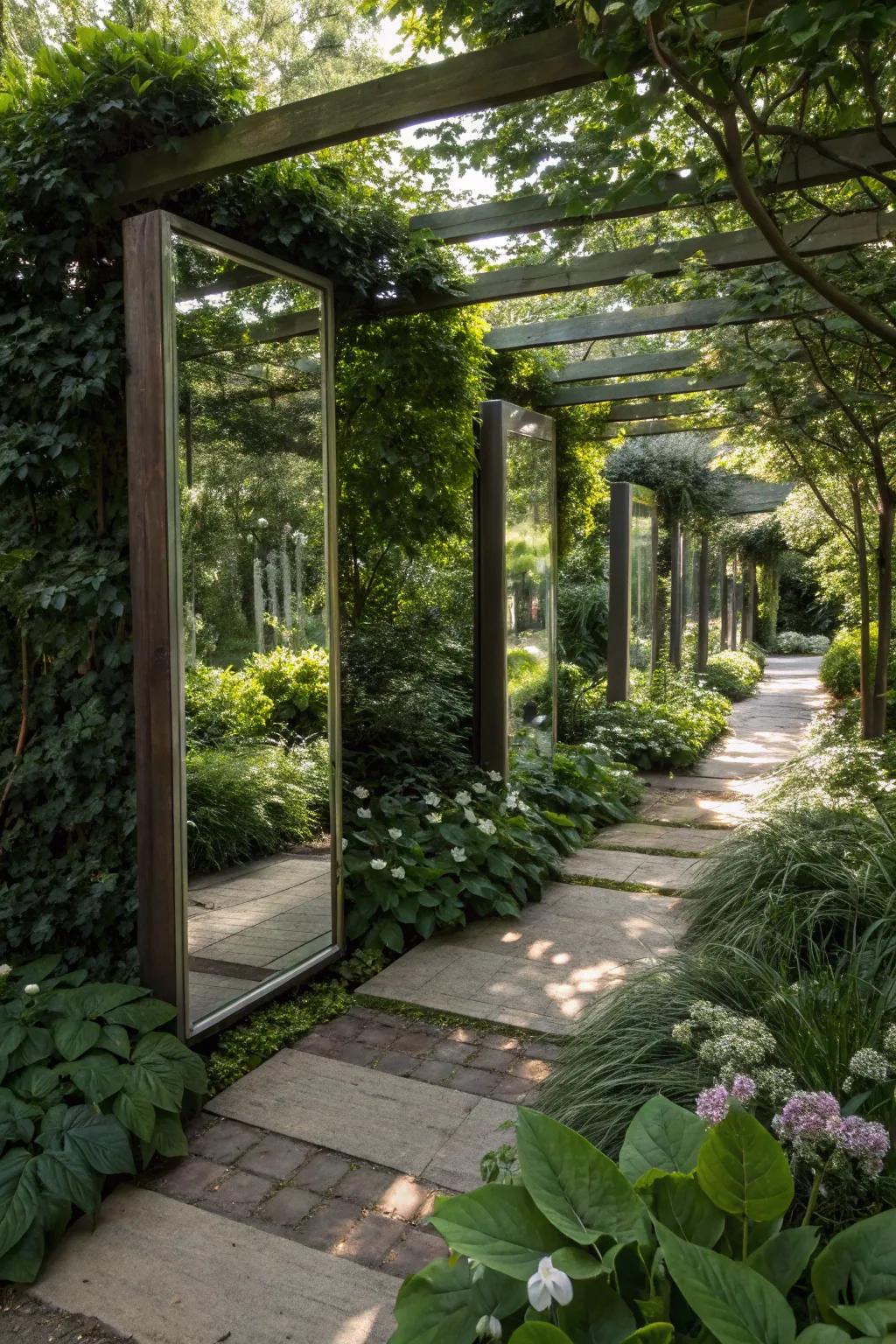
There’s something almost enchanting about stepping into a garden corner that should be dim—but finds itself bathed in soft, mirrored light.
You don’t need full sun to create moments of radiance.
If you’ve ever wished a shady nook in your garden felt a little brighter, consider adding reflective surfaces. Mirrors, polished stones, or shiny art pieces can bounce sunlight into even the gloomiest spots, visually enlarging the space and adding a touch of sparkle. Try these ideas to bring a new light to your garden:
- Hang a weatherproof mirror on a fence to double the greenery and reflect stray beams of light.
- Place reflective garden balls among ferns and hostas—the shimmer adds intrigue and draws the eye.
- Add shiny wind spinners; even the gentlest breeze will set them in motion so the sparkle is always changing.
- Lay flat, metallic stones or tiles at ground level; the glints of light will surprise you at different times of day.
Have you ever noticed how a hint of shine can pull you deeper into a shady garden? Try it—it’s a little bit of alchemy for your outdoor haven.
You might like:
7. Who Says Shade Can’t Sparkle?
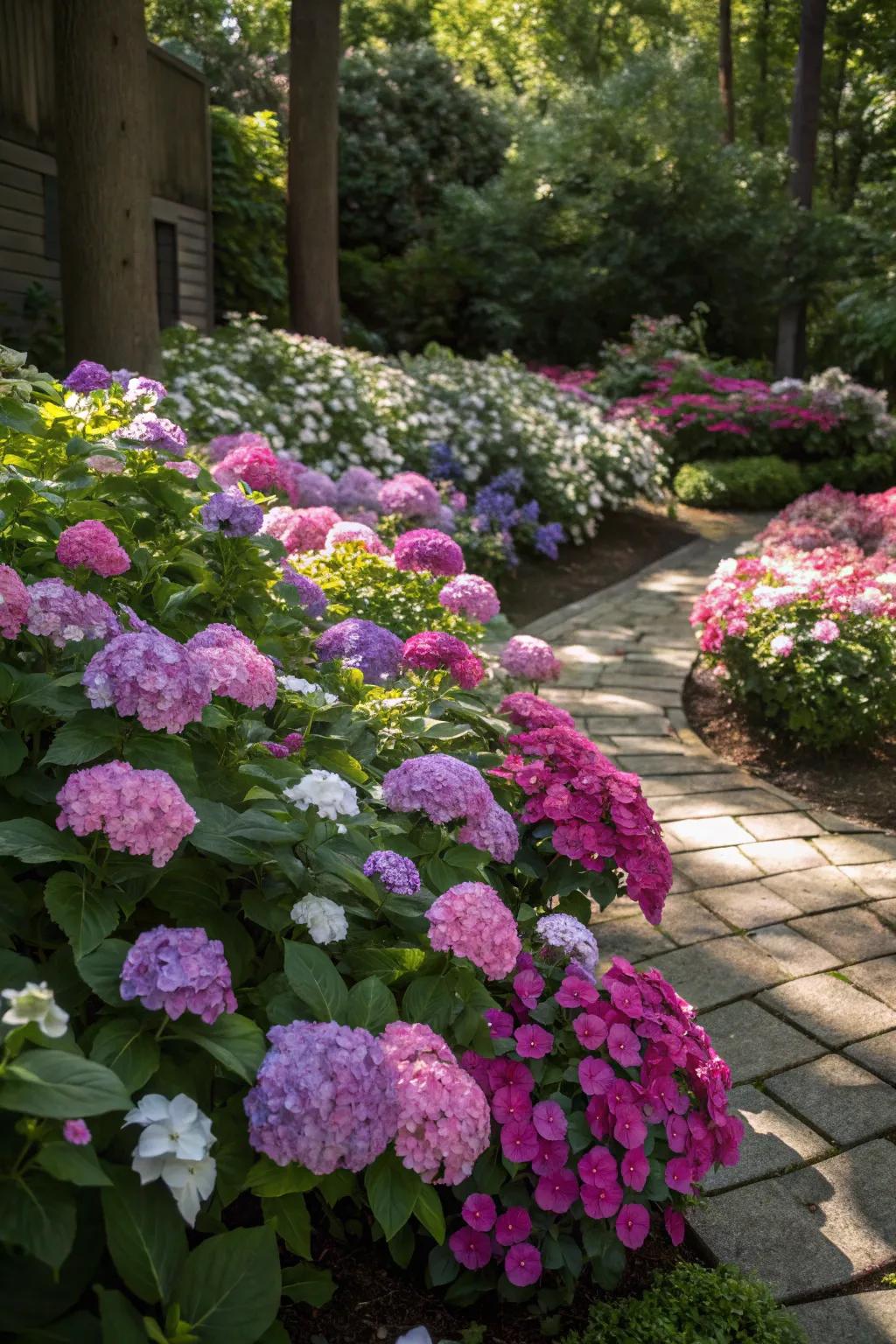
Shady gardens don’t have to blend into the background. Tuck in some hydrangeas or impatiens and suddenly, you’ve got fireworks of color where you least expect them.
It’s about creating pops and surprises—like a secret smile between friends—by letting blossoms stand out brightly against lush greenery. Let your imagination play!
Possibly handy products:
8. Go Vertical with Shade-Loving Vines
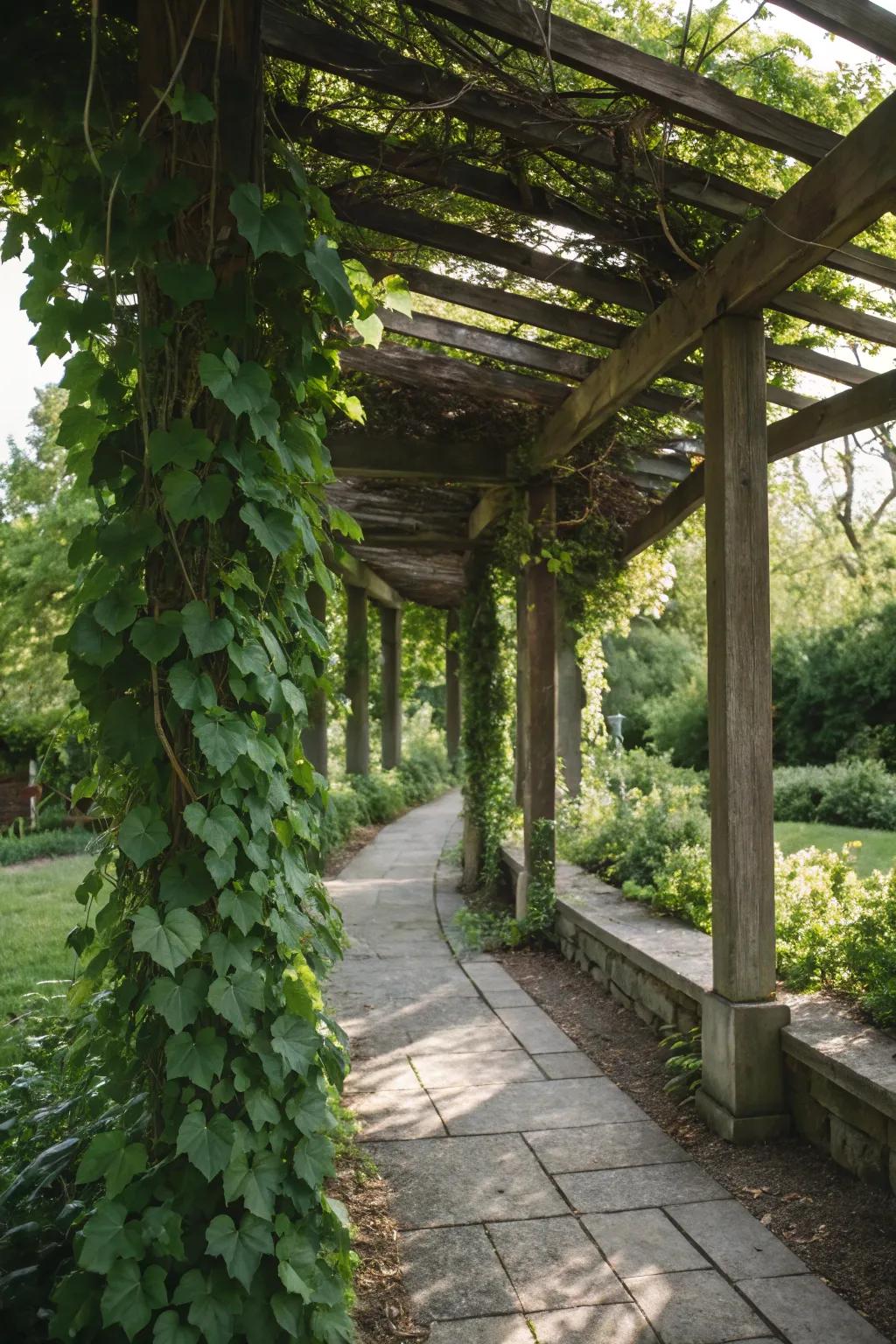
Vines are nature’s way of reaching for the sky, even when sunlight plays hard to get. I always suggest training them along a trellis or up a pergola for instant texture and movement in shaded spaces.
If you’re new to vines, start by:
- Choosing species like climbing hydrangea or ivy for reliable shade growth.
- Guiding tendrils gently to help them find their way—patience pays off!
Small changes can make your whole garden feel brand new.
You might give these a try:
9. Lush by Design
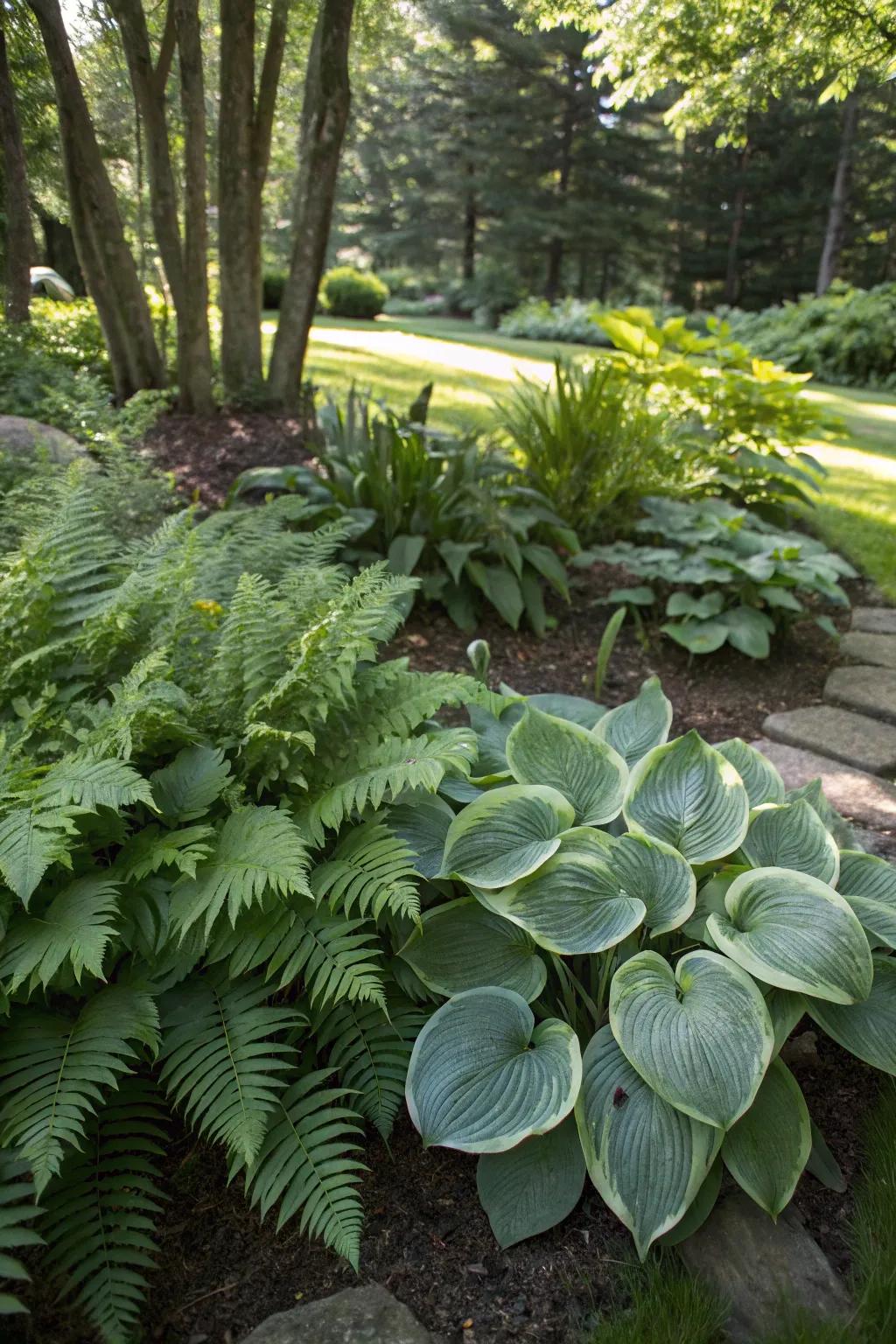
If there’s one gift shade generously gives us, it’s the invitation to go wild with foliage. Picture this: a quilt of overlapping greens, each leaf shaped and shaded a bit differently, each one adding dimension and depth. Big, bold hostas, feathery ferns, and lush layers that practically whisper tranquility every time you pass by.
I once helped a lovely couple, Linda and James, bring life to their snug balcony, which hardly saw a sliver of direct sun all day. Instead of fighting the shade, we leaned in. Choosing dramatic foliage, we traded in fleeting blossoms for long-lasting texture and year-round interest. Their little patch became a vibrant oasis, proof that green is anything but boring.
Here’s how you can embrace the power of stunning shade foliage:
- Mix different green hues and leaf textures for maximum impact.
- Layer plants by height—from tall ferns to ground-hugging hostas.
- Don’t forget accents: mossy rocks or a pop of variegated leaves bring contrast.
Sometimes, the simplest choices—like grouping lush plants together—create the most restorative retreat.
Let your shade garden whisper back to you, “You’ve found your quiet place.”
Maybe worth checking out:
10. Where Will You Unwind?
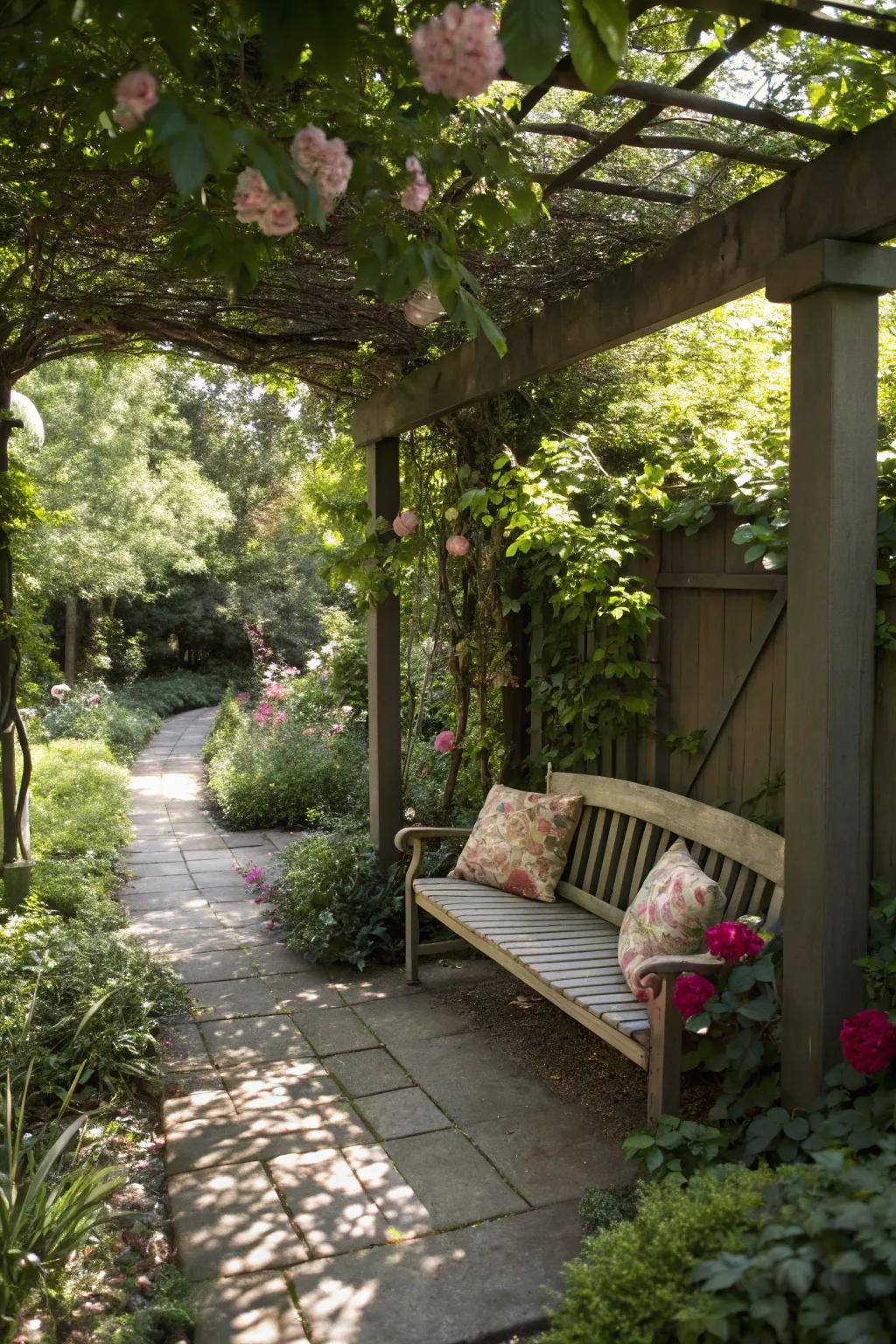
Every garden needs a place to pause.
Imagine a soft bench, dappled sunlight, and the quiet rustle of leaves overhead. Have you set aside a little nook for yourself? Choose the comfiest spot, add a cushion or two, and let the shade become your personal retreat.
A few things you might like:
11. Enhance with Curving Pathways and Elegant Borders for Flow

A truly inviting shade garden is more than just plants—it’s an experience. Think winding pathways that pull you deeper, corners edged with lush borders, and the gentle crunch of gravel underfoot. Adding a little hardscape turns your garden from a patch of green into a journey.
Curious how to begin? Here are some ideas to shape your shady retreat:
- Use natural stone or reclaimed brick for pathways—they add a timeless touch.
- Soften the edges with low foliage, like Japanese forest grass or creeping Jenny.
- Frame winding paths with subtle lighting for an enchanting after-dusk stroll.
- Consider a simple border of shade-loving groundcovers to define the journey.
Sarah, a busy mother of three, once asked me to design a garden path that would double as a storytelling trail for her kids. After her first evening walk, she said, “I feel like we’ve moved into a fairytale.”
Every garden deserves a little magic.
These products might be useful:
12. Why Layer Plants?
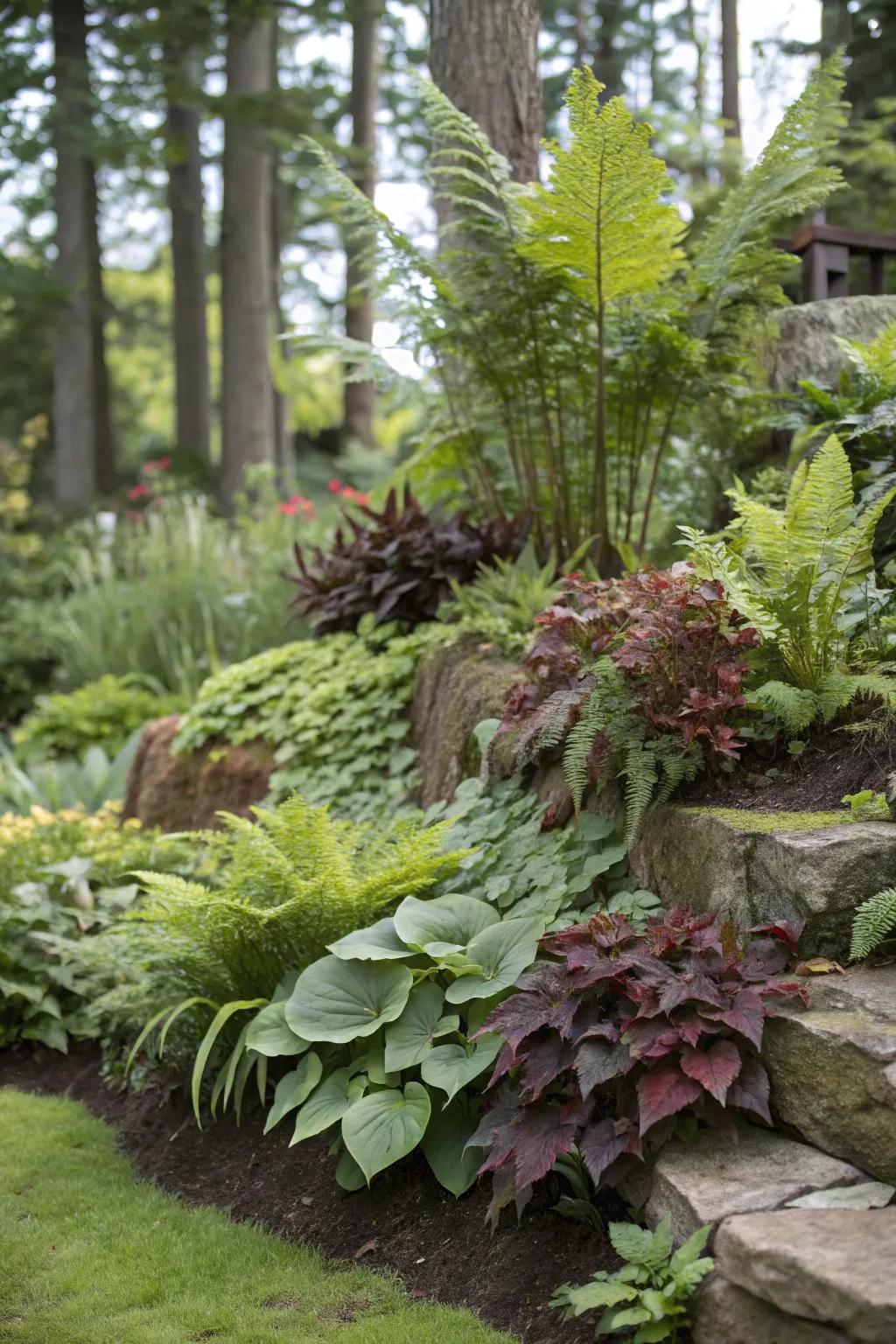
Layering isn’t just for lasagna—your garden can savor it too! Start by planting tall, arching ferns behind medium-height hostas and groundcovers to draw the eye through your shady space.
Try this approach and watch the depth and dimension bloom right before your eyes!
Items that may come in handy:
13. When Water Sings: The Transformative Power of a Garden Feature
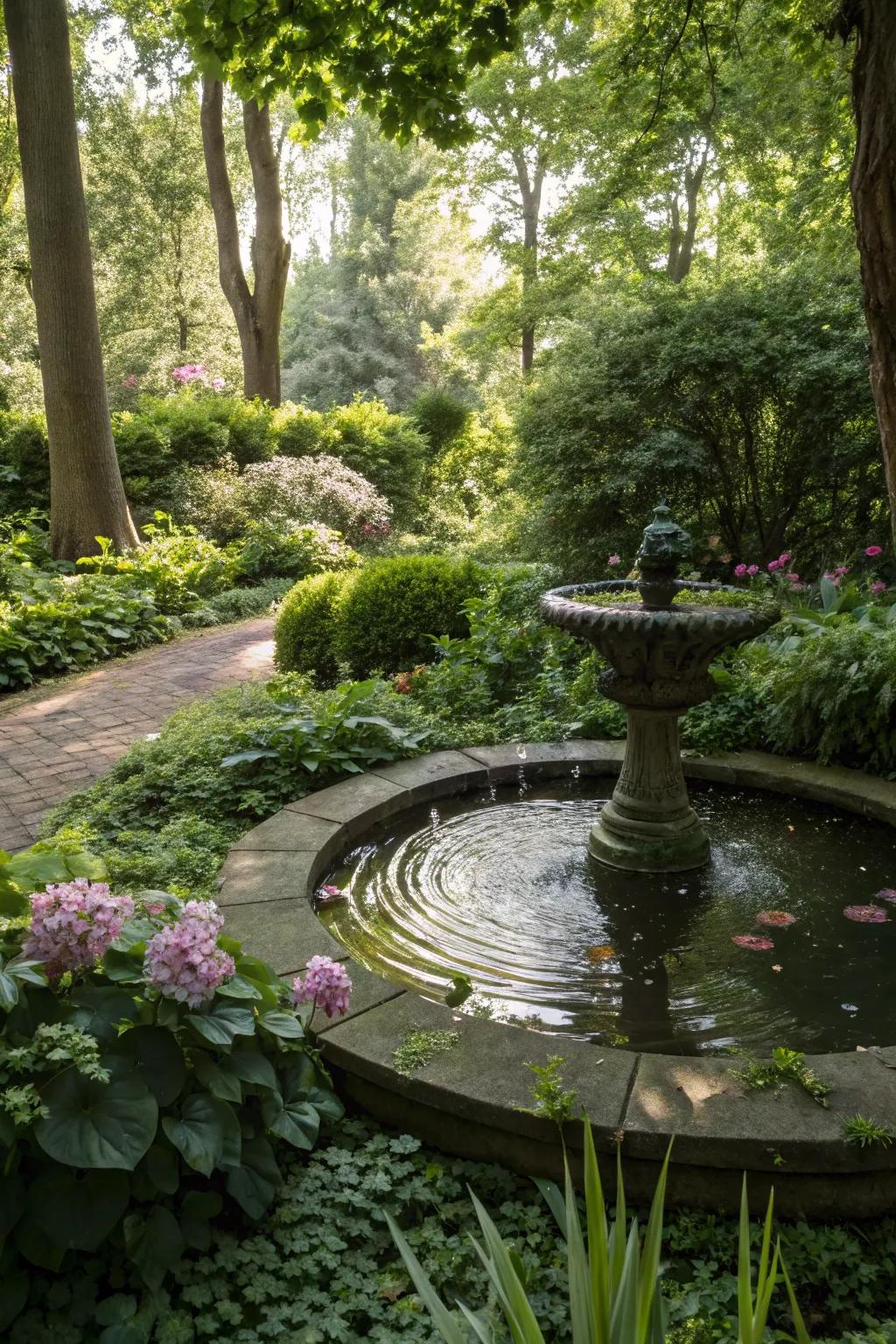
Picture this: you step into a shaded nook and are instantly wrapped in the soft gurgle of water, leaves trembling on its cool reflection. It’s easy to forget how much the element of sound shapes our outdoor experience—until you add a fountain, trickle, or pond.
The presence of water in a shade garden doesn’t just soothe; it anchors the whole space. Listening to gentle splashes, your mind quiets, and suddenly, dappled shade feels even more like a sanctuary.
How does running water affect your mood? I’ll never forget helping the Ellis family create a serene spot beneath their old maple. That shady corner had always felt underused. But once we installed a simple solar fountain, it transformed into a retreat where they could unwind, listen, and reconnect, even at the end of a hectic day. Their little ones loved peering over the edge, watching dragonflies hover. It became the place everyone gravitated towards.
Looking for the right water feature? Here are a few favorites that blend perfectly into shade:
- Choose a bamboo spout over a rock basin for subtle, melodic trickles.
- Tuck a ceramic fountain among ferns for elegance with minimal fuss.
- Try a solar-powered bird bath for an eco-friendly, low-maintenance option.
- Consider a micro pond ringed with moss and stones—small but big on tranquility.
Sometimes, all it takes is a single change—the hush of moving water—to turn your whole garden into a haven.
Give these a look:
14. Pots Packed With Possibilities
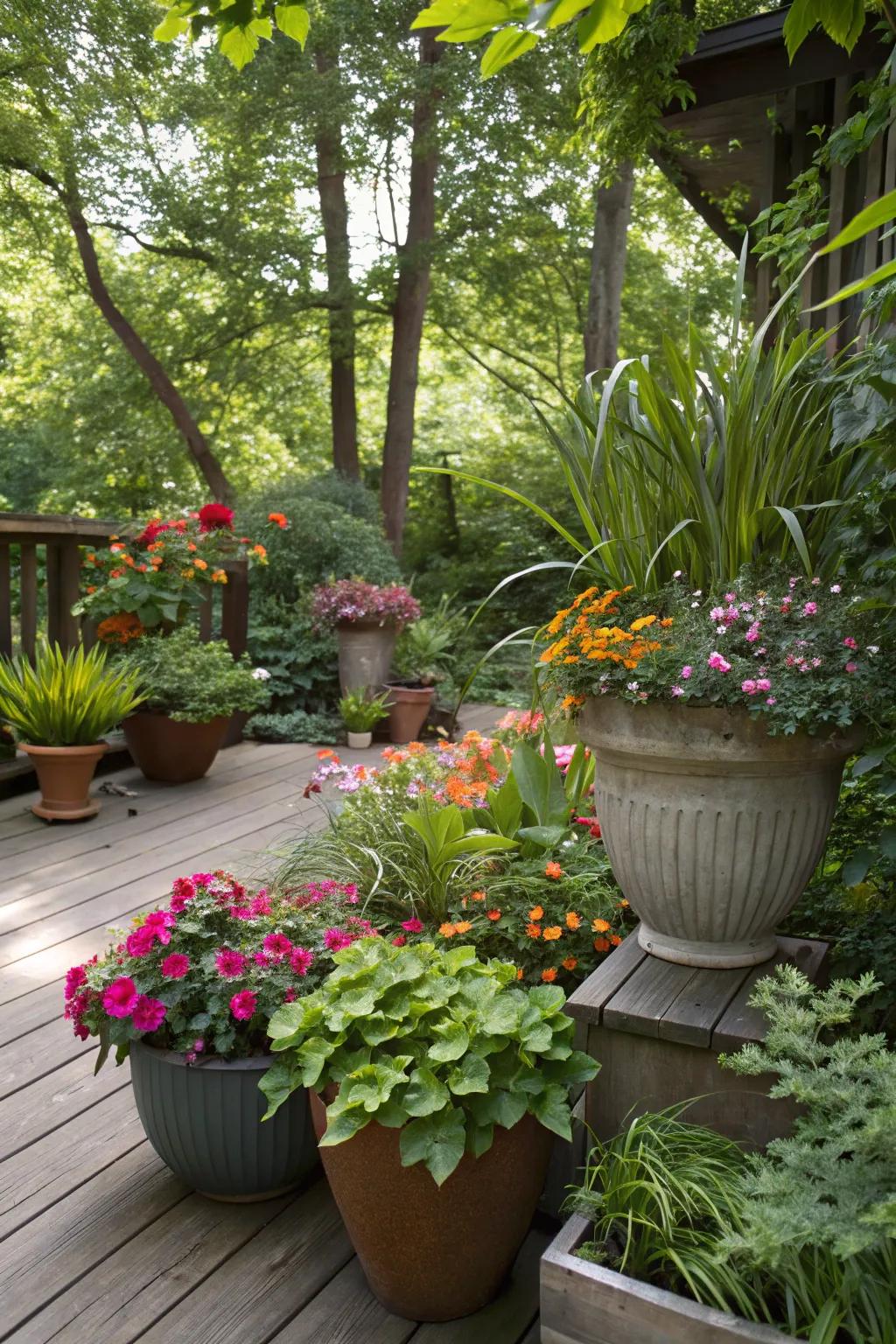
Give your shade garden some lift and life by embracing containers and pots in all shapes and sizes. There’s something magical about being able to move bursts of color and texture wherever inspiration strikes—one day clustered beneath a leafy tree, the next gathered near your garden bench.
Container gardening is more than just practical—it’s a palette for your creativity. If you’re working with a patch of deep shade or a paved courtyard, here’s how I love to make the most of pots:
- Try mixing tall, slender pots with squat, rounded ones for instant visual interest.
- Use lightweight containers for ease of rearranging—especially important if you like to change your mind as often as I do!
- Plant trailing varieties at the edges to soften hard lines and create a lush, layered look.
I’ll never forget when I helped my clients Maya and Devon transform their tiny, shaded balcony into a lively oasis. By arranging an assortment of cobalt blue ceramics and classic terra cotta pots at different heights, we created a sense of depth where there was barely room for a chair. The result? It felt twice as big and a whole lot more inviting.
Containers can turn any shaded corner into a spotlight.
Whether you’re tucking in ferns, hostas, or a pop of impatiens, remember: pots let you experiment without commitment—and sometimes, the best ideas come from a little playful rearranging.
Might be a good match:
15. Seamless Sanctuary
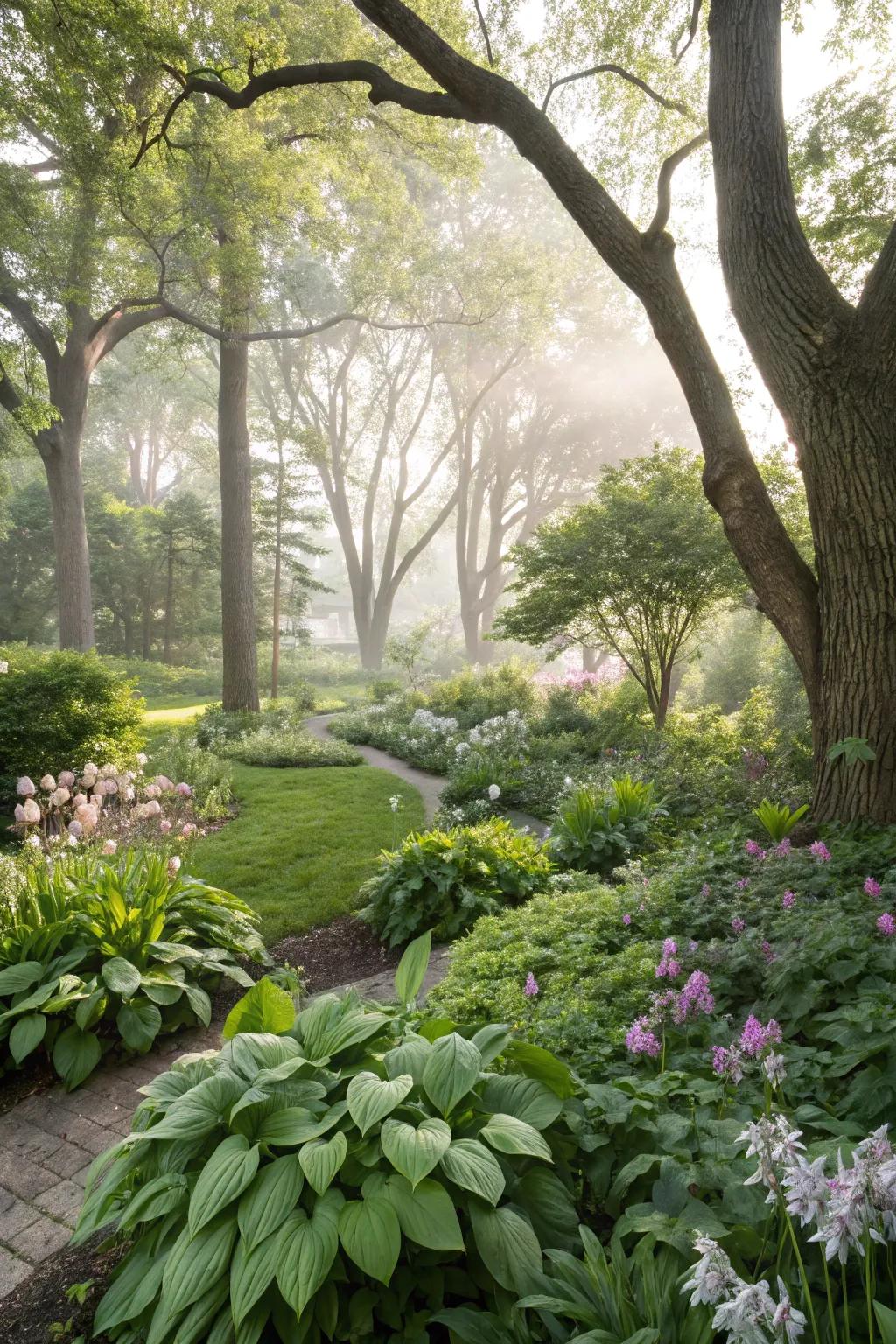
The beauty of a shade garden lies not just in what you plant, but in how you allow it to embrace the wild edges.
Don’t draw a hard line between garden and forest—instead, let trees, rocks, even a hint of wild moss, become part of the story.
Soon, your garden will feel less like a border and more like a gentle sanctuary, nestled quietly beneath a natural canopy.
Let your garden melt into its natural roots.
Possibly helpful picks:
16. Add a Pop of Surprise Color
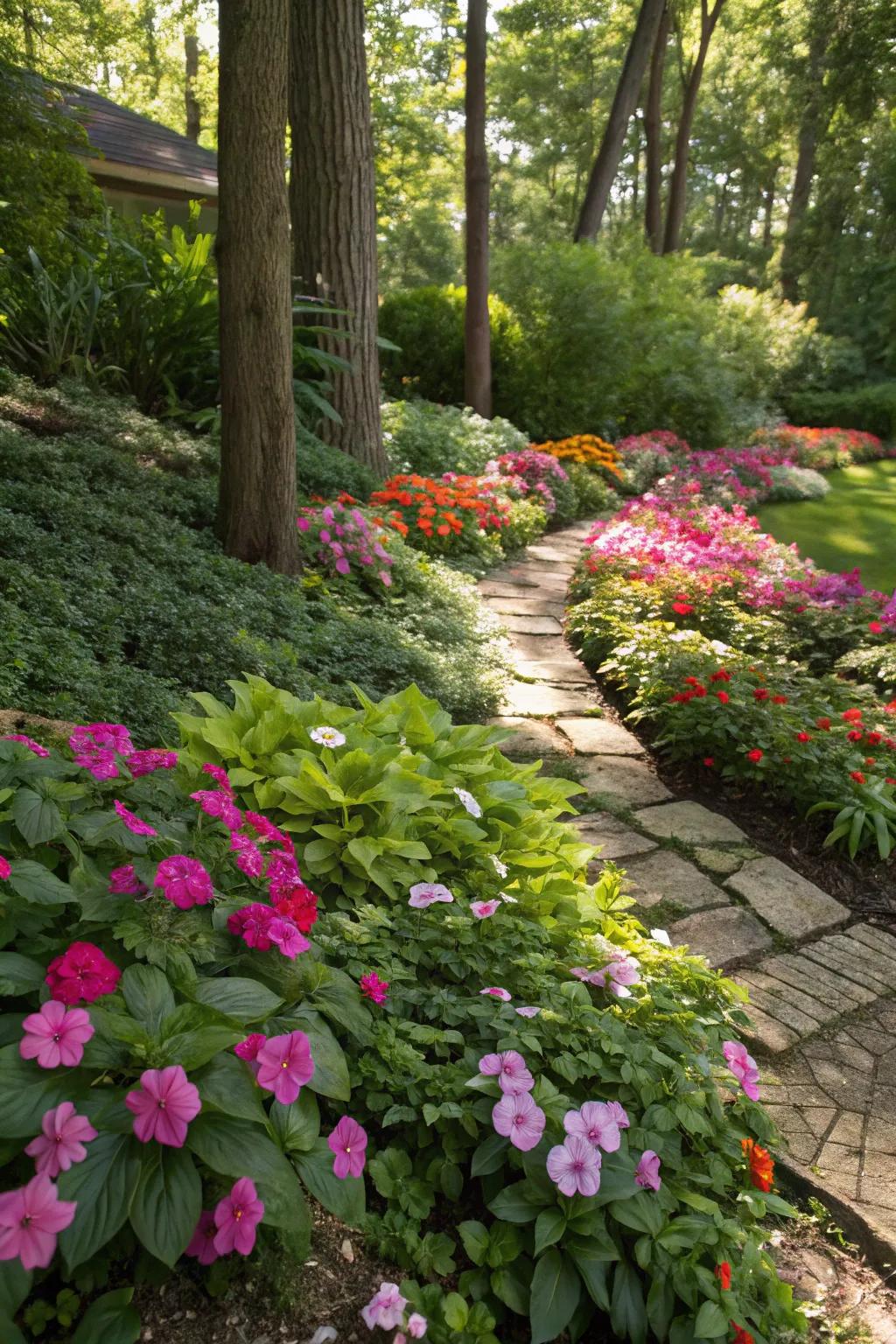
Include unexpected bursts of color with vibrant annuals. I love how these surprises catch the eye and bring joy to any visitor.
Try these:
17. Light Up with Garden Lighting
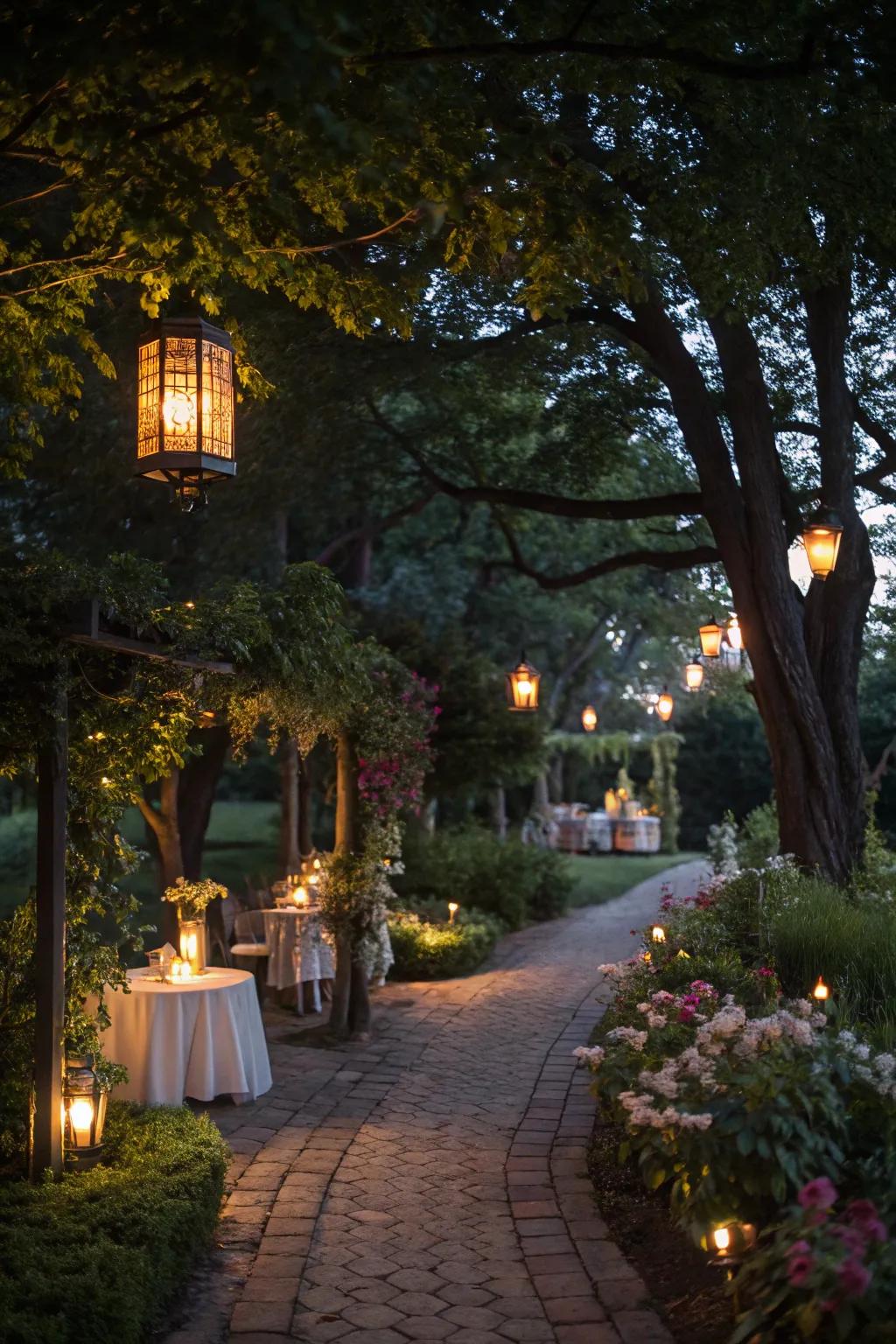
Install soft lighting to enjoy your garden after dusk. My evenings are magical with the gentle glow highlighting my favorite spots.
A few suggestions:
18. Pergolas and Trellises: The Secret to Creating a Cozy Vertical Retreat
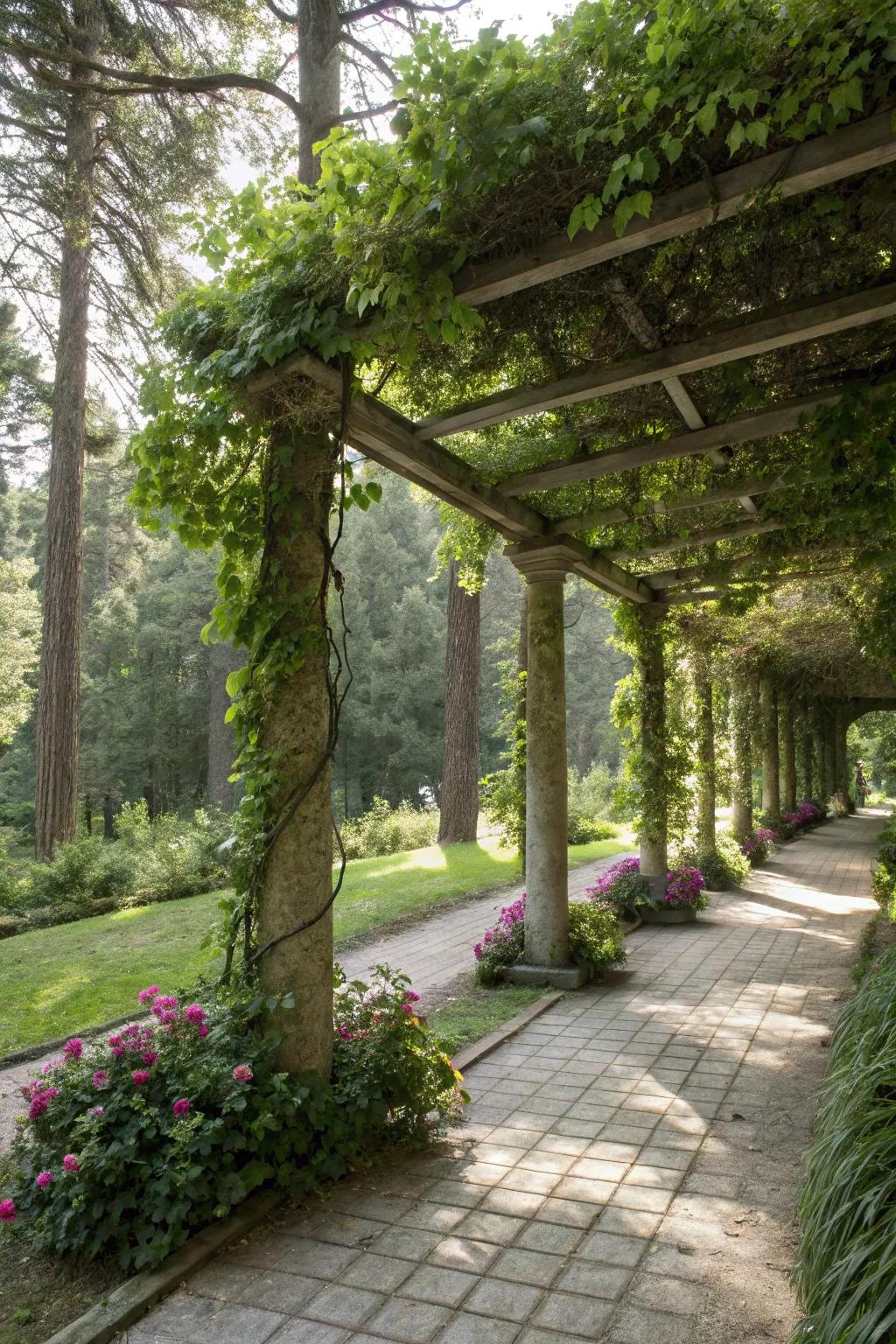
Imagine stepping into your garden and being greeted by a dappled, leafy canopy that transforms a shady patch into a dreamy sanctuary. That’s the power of adding pergolas, trellises, or even a simple arbor to your outdoor space. Not only do these structures elevate your garden—quite literally—they cultivate a sense of cozy seclusion and vertical magic that shade gardens sometimes lack.
I’ll always remember the summer I worked with Emily and Victor, who wanted their garden to feel private but not boxed in. We chose a wooden pergola for their main sitting area, threading it with hardy climbing hydrangea and delicate clematis. Within one season, it went from bare beams to a lush, living ceiling that shielded their patio from harsh light and nosy neighbors alike.
The right structure is more than just support for plants—it’s a statement piece. Wondering how to choose or enhance your pergola or trellis? Here are some artful options to consider:
- Opt for painted wood or rustic metal to express your personality.
- Weave in string lights or lanterns for nighttime ambiance.
- Grow a mix of evergreen and flowering climbers for year-round charm.
- Place a bench or hanging chair beneath to create an inviting nook.
Emily told me: “It’s our favorite place to unwind—protected from the world, but completely at home in our garden.”
So, when you’re designing a shade garden, don’t just look down—look up. Sometimes, the best inspiration hangs overhead!
Check these products out:
19. Texture: Have You Tried Mixing It Up?
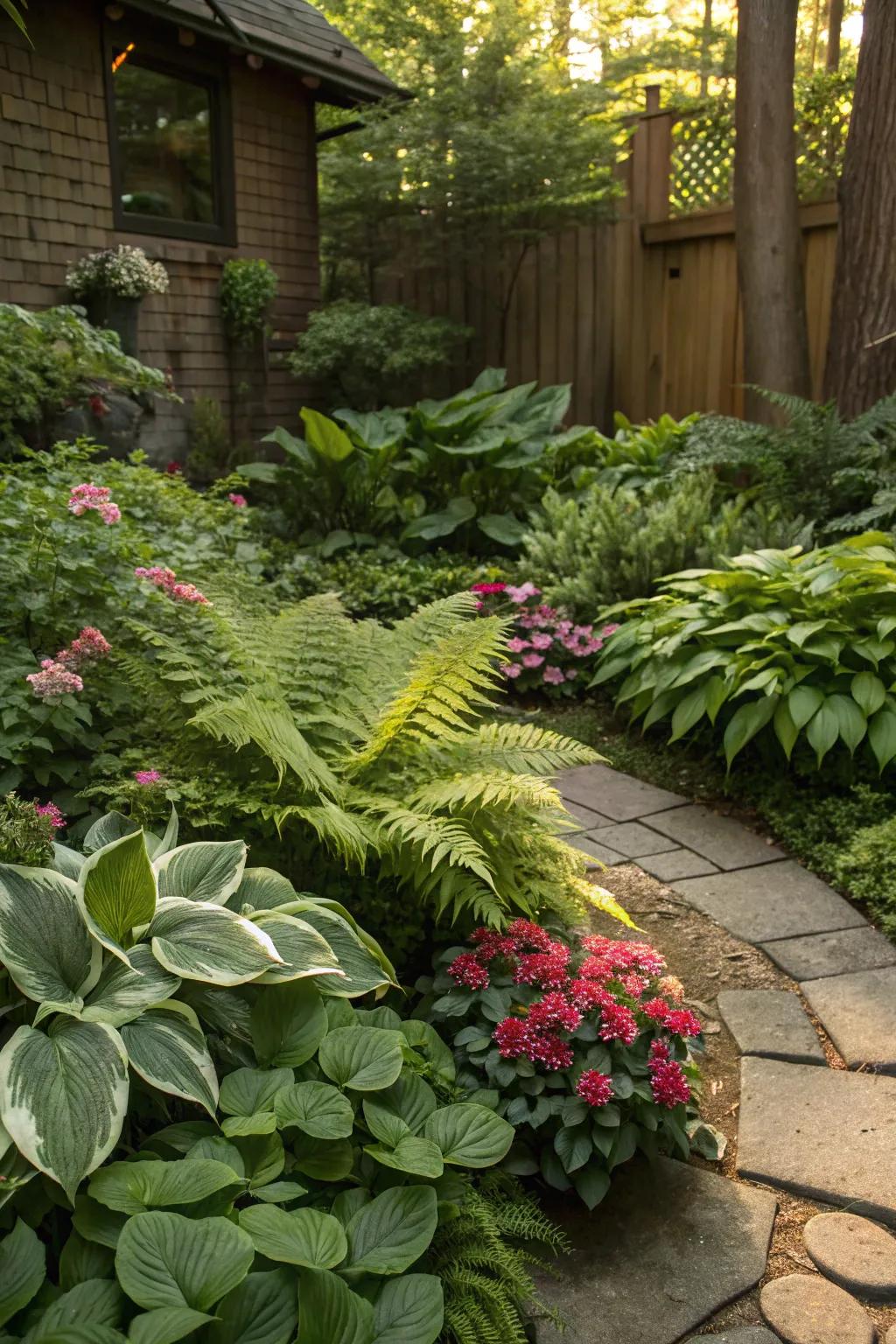
If you’ve ever run your fingers across the silky leaves of a hosta and then brushed the feathery fronds of a fern, you know what a difference texture makes.
Shade gardens thrive on these contrasts—lush, glossy versus matte and delicate, bold shapes next to fine details.
Pairing a spiky Japanese forest grass next to a mound of velvety coral bells can do more to wake up a shady corner than any flower ever could.
Try it and see how your garden practically begs for a closer look.
Texture is the secret ingredient to a garden that never feels flat..
These products might help:
20. Letting Nature Lead: Embracing the Art of Naturalistic Style
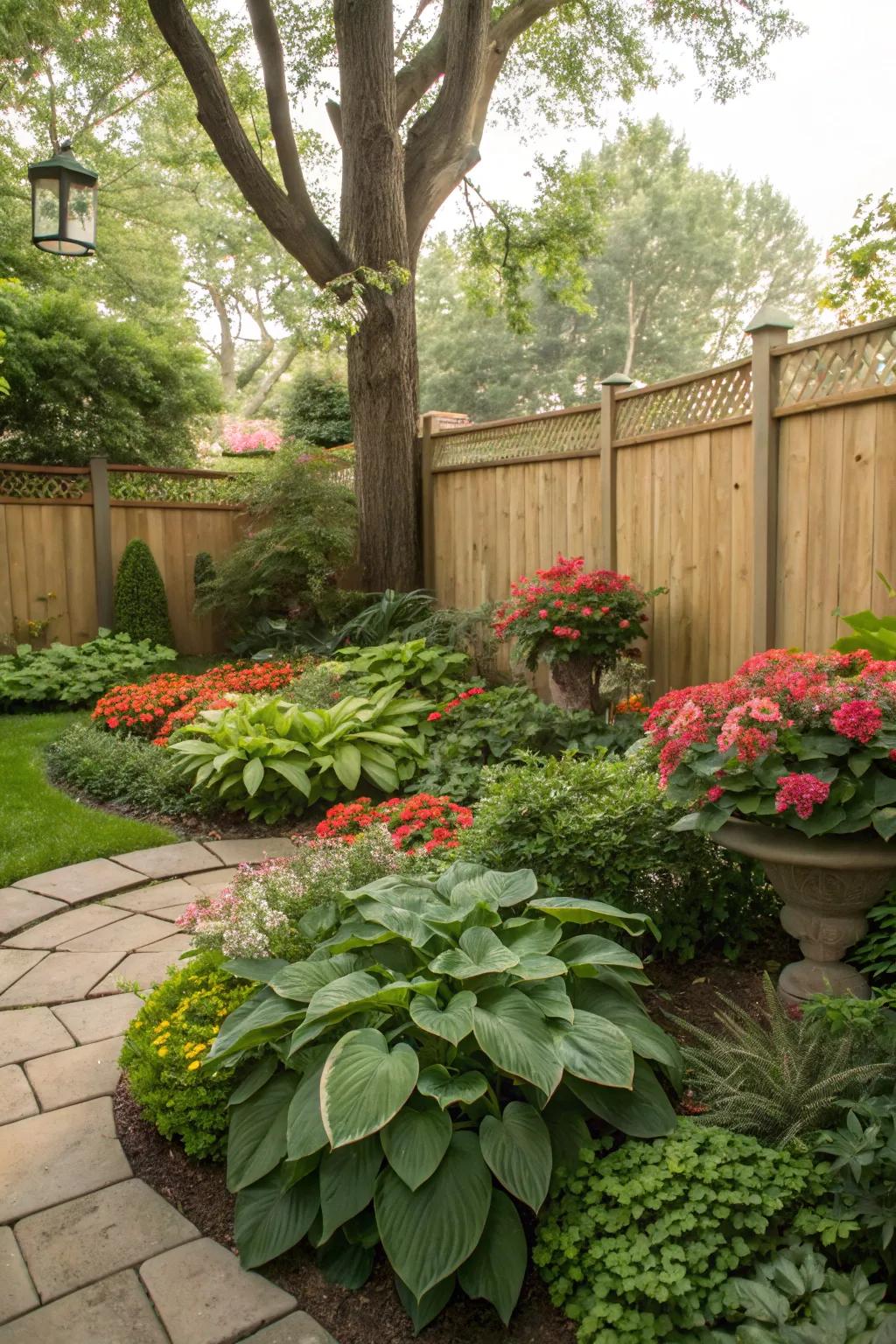
There’s a certain magic in gardens that look like they’ve always belonged. Naturalistic gardening isn’t about a wild tangle—it’s about a quiet, intentional harmony. When I step into a space that feels as if it was revealed, rather than arranged, I know nature is at work.
What does “natural” really mean in your shade garden? For me, it’s about letting the land whisper its own story. Maya and Oliver—two clients who adore the effortless look—were longing for a space that felt serene but not static. They wanted to stroll through their garden and feel like every fern or mossy stone had just happened to settle in the perfect spot. We ditched the rulers, loosened up the planting lines, and watched their garden come alive with spontaneous beauty.
Want to create this look at home? Here are my three guiding principles for a truly organic shade garden:
- Let plant groups drift and intermingle, echoing the way wild woodlands organize themselves.
- Use natural materials—like mulch, stone, or fallen logs—to define paths and borders gently, not sharply.
- Allow self-seeders (like violets or forget-me-nots) to wander where they wish for pockets of surprise.
A naturalistic style means welcoming imperfection. The best part? With every season, your garden evolves, no two moments ever quite the same. If you listen, you might even find that nature’s ideas are better than anything you could have planned yourself.

